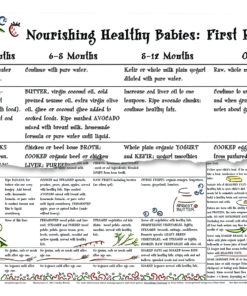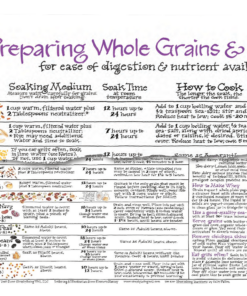Sound like a superfood? It is!
But what is kefir (pronounced ke-fir)? Originating from the north Caucasus Mountains, located between the Black Sea and the Caspian Sea, kefir is a cultured milk product much like yogurt. But while yogurt is cultured solely with the beneficial bacteria known as lactobacilli, kefir is cultured with lactobacilli and lactic-acid producing yeast. This is what makes kefir such a nutritional powerhouse and a terrific weapon against conditions like candida, thrush, eczema, and many other ailments that involve Candida albicans, a yeast that can cause an imbalance of microbes in and on you.
Yeast is the common thread here, and if you are prone to any of the following conditions, the yeast in kefir can bring you back to balance.
Candida – The type of candida I want to address today causes yeast infections in women. These are otherwise known as vaginal yeast infections, vaginosis, candidal vaginitis, and candidal vulvovaginitis. It may also be found on the skin. Referred to as cutaneous candidiasis, this is not the same as eczema, though both are inflammatory skin conditions caused by Candida albicans. Both can be treated with kefir, so read on!
Thrush – This includes oral thrush (affecting both adults and babies); thrush contracted by nursing moms on their breasts; and thrush that shows up as diaper rash.
Eczema – Referred to as atopic dermatitis or atopic eczema, the most common form of eczema. While the medical community has not clearly determined the cause of eczema, it has been tied to the health of the gut and the microbiome. And yes, it is linked to an overgrowth of Candida albicans in the body. What is not yet clear, however, is the microbial makeup of eczema on the skin itself. Even so, whether or not yeast or candida is present topically, and whether or not it is causal, kefir can still bring relief.
Easy Ways Kefir Brings Relief: Internal and External Uses
Drink your kefir! Consuming kefir every day is the first way you can use it to treat these conditions. When you incorporate kefir into your diet, you are not only feeding and balancing your gut flora, but you are also healing your digestive tract with the soothing lactic acid present in the kefir. In fact, since an unhealthy or damaged gut (aka a “leaky gut”) may very well be the cause of candida (in all of its forms), thrush, and eczema, you would do well to heal it! (For more information on how to heal your leaky gut, see the first book in my series Cooking Techniques for the Gut and Psychology Syndrome Diet, Part I: Meat Stock and Bone Broth.)
If kefir is new to you, start off drinking just little bit, perhaps a tablespoon or so per day for a while. Slowly increase until you can tolerate four to eight ounces or more per day. Kefir is a powerful food! For some people, drinking too much too fast can provoke a severe detoxification (detox) reaction, with flu-like symptoms, nausea, severe diarrhea or vomiting, and fever. Symptoms can also include brain fog, migraine headaches, eczema or skin flares, and mood swings, among other things. To learn more about such reactions, I recommend this interview with Dr. Natasha Campbell-McBride. Also see page 124 and page 251 of her book Gut and Psychology Syndrome, an overall great resource on using kefir for gut healing. I also recommend this article from GAPS Australia for in-depth information on kefir.
Using Kefir Topically
The other way to help clear these conditions is to use kefir topically. Yes, topically. (Or, in the case of vaginosis, internally.) For vaginal yeast infections, douching with kefir or inserting it into the vagina may help clear the infection. You may also use it topically on the labia to clear irritation. Simply apply before bed (wear a pad when you do so) and rinse off with cool water in the morning.
Kefir applied topically also works very well to clear thrush. For nursing moms with babies who have oral thrush, simply apply the kefir to the breast prior to feeding. You may also put some on your finger and let your baby suck it off, or wipe the inside of your baby’s mouth with kefir. To clear diaper rash, apply kefir directly on the rash and in the folds of the groin.
Eczema also benefits from the topical application of kefir. You may apply it to the skin or soak affected areas in a kefir bath. Note: it is not unusual for the skin to “flare” at first use or during the first few days on its way to healing.
How to Make Kefir at Home
Making Kefir with Kefir Grains
Ingredients
1 quart raw cream or milk, or organic heavy cream from grass-fed cows (pasteurized okay, but not UHT), or a combination
2 generous tablespoons kefir grains
Instructions
- Stir together grains and cream or milk (or combination) in a wide-mouth glass jar. Cover loosely to allow oxygen in, which helps the yeast in the kefir grow.
- Leave on the counter for a minimum of 24 hours.
- Strain the grains out before drinking the kefir.
- Start another batch following the steps above.
- Consume as desired.
How to store kefir grains: If you do not make kefir daily, refrigerate your grains in a glass jar with whole milk or cream—the best quality you can find, never UHT. Feed your grains fresh milk or cream once a week to keep them robust.
Okay, so now you are convinced that the merits of kefir make it a superfood. But where do you get those grains? Kefir grains multiply every time you make it, so check with your local Weston A. Price Chapter as folks often give away their excess grains. Other good sources are Cultures for Health Milk Kefir Grains and Body Ecology Kefir Starter.
For more information about the benefits of culturing dairy, as well as easy to follow recipes, see my book, Cooking Techniques for the Gut and Psychology Syndrome Diet, Part II: Culturing Dairy, available from Selene River Press.
Photos from iStock/oksun70 (main photo), dulezidar (kefir)




